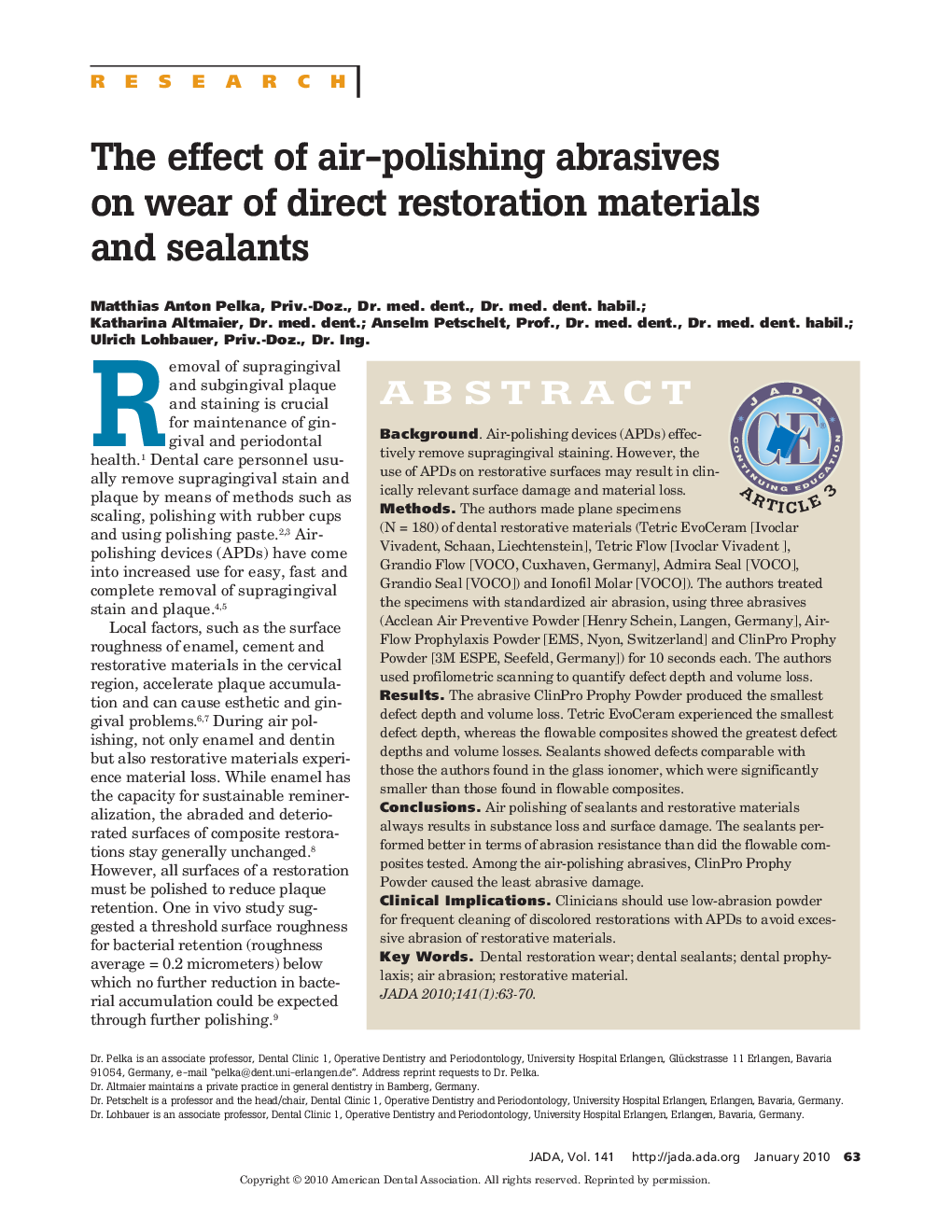| Article ID | Journal | Published Year | Pages | File Type |
|---|---|---|---|---|
| 3138626 | The Journal of the American Dental Association | 2010 | 8 Pages |
ABSTRACTBackgroundAir-polishing devices (APDs) effectively remove supragingival staining. However, the use of APDs on restorative surfaces may result in clinically relevant surface damage and material loss.MethodsThe authors made plane specimens (N = 180) of dental restorative materials (Tetric EvoCeram [Ivoclar Vivadent, Schaan, Liechtenstein], Tetric Flow [Ivoclar Vivadent], Grandio Flow [VOCO, Cuxhaven, Germany], Admira Seal [VOCO], Grandio Seal [VOCO]) and Ionofil Molar [VOCO]). The authors treated the specimens with standardized air abrasion, using three abrasives (Acclean Air Preventive Powder [Henry Schein, Langen, Germany], AirFlow Prophylaxis Powder [EMS, Nyon, Switzerland] and ClinPro Prophy Powder [3M ESPE, Seefeld, Germany]) for 10 seconds each. The authors used profilometric scanning to quantify defect depth and volume loss.ResultsThe abrasive ClinPro Prophy Powder produced the smallest defect depth and volume loss. Tetric EvoCeram experienced the smallest defect depth, whereas the flowable composites showed the greatest defect depths and volume losses. Sealants showed defects comparable with those the authors found in the glass ionomer, which were significantly smaller than those found in flowable composites.ConclusionsAir polishing of sealants and restorative materials always results in substance loss and surface damage. The sealants performed better in terms of abrasion resistance than did the flowable composites tested. Among the air-polishing abrasives, ClinPro Prophy Powder caused the least abrasive damage.Clinical ImplicationsClinicians should use low-abrasion powder for frequent cleaning of discolored restorations with APDs to avoid excessive abrasion of restorative materials.
